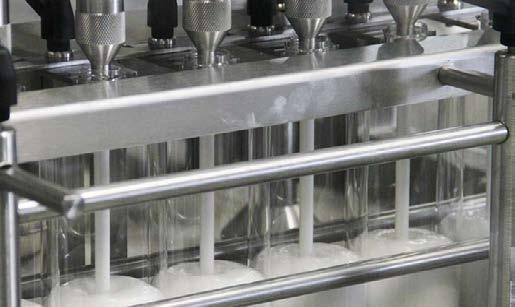
11 minute read
Outsourcing to the rescue in an
Outsourcing to the rescue in an unprecedented year
By Rodney Steel, Chief Executive, BCMPA
Advertisement
Rodney Steel, Chief Executive of the Association for Contract Manufacturing, Packing, Fulfilment & Logistics, reflects on how outsourcing has played a key role in supporting businesses during the pandemic
There have been winners and losers in 2020, but the outsourcing industry has been absolutely essential to many manufacturers and brands owners who, without our members’ help, would have been in a precarious position.
ADAPTING QUICKLY TO CHANGING REQUIREMENTS A prime example of our members’ flexibility was the demand for sanitiser products, which rocketed to hundreds of millions of units virtually overnight. Additional filling machines were installed, existing bottling lines for shampoo and gin were adapted for hand sanitiser, and gift packing production was diverted to produce PPE kits. By their nature, outsourcing companies are used to being nimble, but the challenges of 2020 required them to be positively athletic, in order to respond quickly to changing market requirements and consumer demands.
E-COMMERCE FULFILMENT One area in particular that experienced huge growth as a result of the pandemic was online sales and deliveries made direct to consumer (D2C). In fact, this increase in online shopping had already been identified as a significant trend for 2020, but the impact on demand caused by COVID-19 was vast. For many of our members, demand for certain products meant that they were experiencing the peaks of Christmas or Black Friday on an almost daily basis. While this undoubtedly generated major commercial opportunities for brand owners, it also brought with it the risk that they might not be able to cope with such large volume growth, which could in turn damage their reputation with their end customers. Outsourcing, therefore, provided a valuable solution to mitigate this risk.
DELIVERING THE ‘END-TO-END’ SERVICE To satisfy this ever-growing requirement for companies to outsource their e-commerce fulfilment and logistics operations, many BCMPA members now provide a complete ‘end-to-end’ service covering everything from contract manufacturing and packing through to storage, pick, pack & despatch. Support is there right across the supply chain. As one brand owner put it, “If we are going to outsource at all, we would much prefer to outsource the complete project so that we can get on with focusing on other parts of our business.”
Another strong trend in 2020 was the significant increase in enquiries from smaller brands and marketeers who had identified opportunities for new products and were reliant on using e-commerce and online channels to bring them straight to market. This growth was typified by the explosion in enquiries on the BCMPA website for White Label and Private Label goods. Once again the ‘one-stop-shop’ was a key attraction.
INCREASING DIGITALISATION Another growing trend has been the move towards digitalisation, driven both by the need for increased efficiencies and the demand for greater visibility from customers, particularly in FMCG markets.
While packing lines will continue to value pairs of human hands, 2021 will undoubtedly see the
development and use of technology including further automation, the tracking of products throughout the supply chain and the increasing use of cobots, which are now available from around eight thousand pounds. All of this will help to ensure that high order volumes can be handled and free-up employees to enable them to focus on added value tasks.
SUSTAINABILITY MATTERS Alongside these technological developments, the requirement for businesses to be sustainable and minimise their impact on the environment will continue. From packaging to transportation efficiencies, sustainability is part of the decisionmaking process and is now an integral factor for FMCG brands when choosing an outsourcing partner.
Our members across every sector have reported a marked increase in the number of clients looking for ‘more sustainable’ packaging. Whilst this is a popular buzzword, perceptions of sustainability often tend to ignore the fact that alternative packaging materials, whilst attractive at first glance, can come with massive carbon footprints. Those who demonise plastic need to be careful what they wish for. It is therefore important that outsourcing companies and their customers continue to work together to find solutions that work on both a sustainability and commercial level.
BCMPA’S 20TH ANNIVERSARY 2020 was our 20th Anniversary Year, which started on a very positive note just before lockdown with the Easyfairs Packaging Innovations show in Birmingham featuring the BCMPA’s Contract Pack & Fulfilment zone which included the Association’s Hospitality Lounge and around 20 exhibiting members. We look forward to the next event in June 2021.
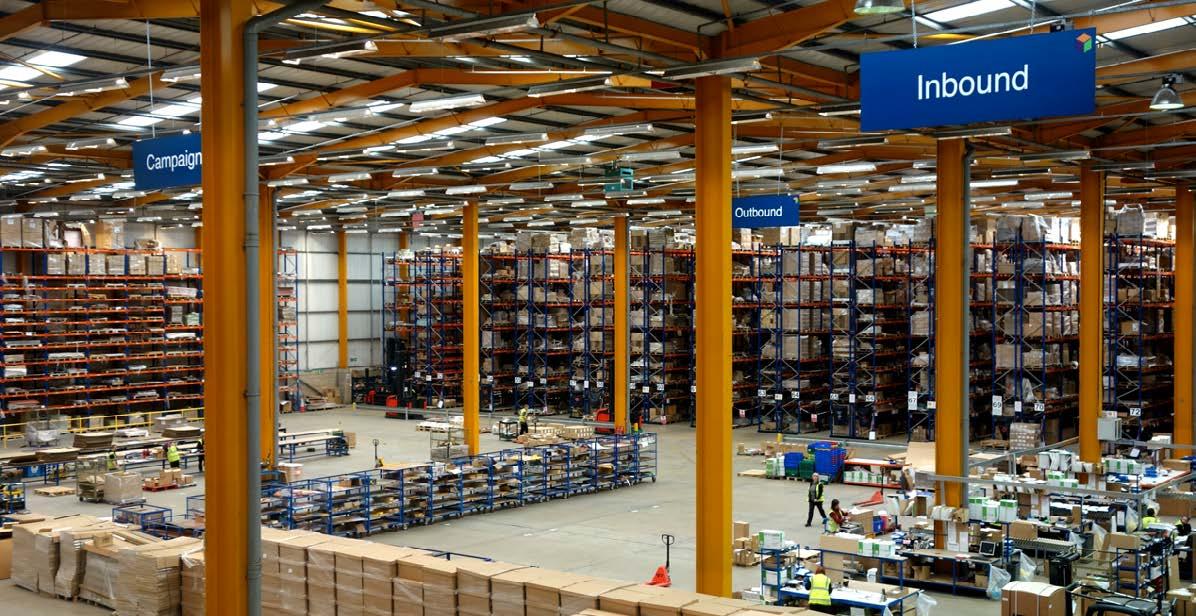
February also saw the launch of our new website which has attracted a significant increase in traffic and in particular the use of our comprehensive search facility and online enquiry form. It’s all witness to the fact that outsourcing across all our sectors is continuing to grow and our members will be there to provide the support that businesses will need in 2021.
For more information and news from the BCMPA, visit www.bcmpa.org.uk
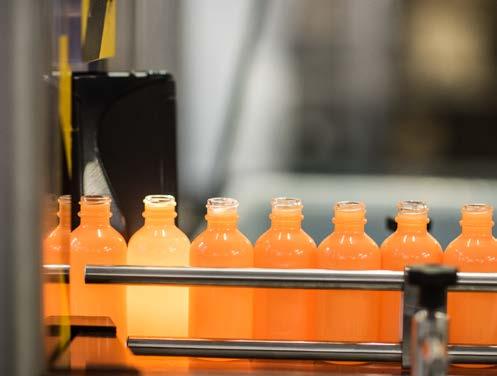
Packaging design trends for 2021 By Adam Ryan, Head of Pentawards
There is no doubt that 2020 will be a memorable year for all the wrong reasons. However, in these times of struggle and hardship, we have seen creativity and innovation soar in the world of packaging design.
With the rise of e-commerce and digitalisation, this has been particularly clear across many categories and in particular in the food sector. Here are the trends I expect to see carry over into 2021, and beyond:
PACKAGING AS ART This is a trend we are starting to see in many luxury products but that will certainly follow into midlevel products as well. With packaging becoming more precious and respected by the consumer, many designers and brands are being influenced and inspired and transferring this onto their packs.

Take a look at this bottle of wine by Codice, for example, wrapped in a detailed oil painting to help invoke texture and depth. This box of chocolates by Cadesio is created with beautiful illustrations which, if they were prints, you would frame and put on your wall at home. Another example is Figlia, with its beautiful hand-crafted olive oil bottles created by a ceramic artist. You certainly wouldn’t throw them away.


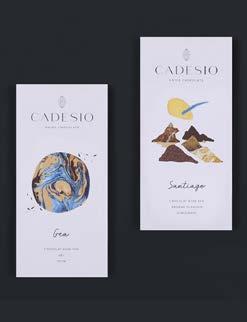
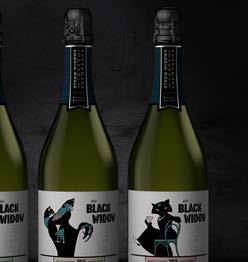
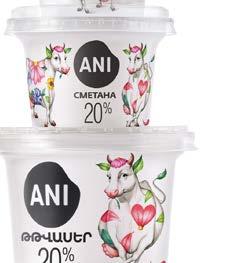
PACKAGING WITH CHARACTERS AND PERSONALITY One thing is for sure, if we could all go back to our childhood we would, it makes us feel nostalgic, playful and youthful. In the last few years there has been an influx of packaging featuring cartoon drawn characters, especially animals. Storytelling has always been a powerful way of connecting with consumers, using vibrant, interesting and intriguing characters that not only make you want to pick up a piece of packaging, but that make you want to learn more about the brand.

With the rise of connected packaging, I predict that more and more brands will use these characters and personalities to tell their stories and strengthen that connection with the consumer.
Top & bottom left: Códice, Estudio Maba. Top right: Cadesio, Cadesio SA & Figlia, Superunion. Middle right: Dong You Ji, Shenzhen Oracle Creative Design. Bottom right: ANI Dairy, Backbone Branding & Other Widows, Studio Kempen.

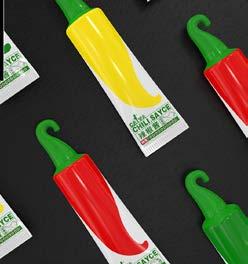
NEW CONSTRUCTIVE FORMS OF TRADITIONAL PACKAGING Something which really stood out during this year’s Pentawards competition was seeing new forms of traditional packaging. I expect that over the next 12 months brands will consider more innovative forms to grab the attention of the consumer both instore and online. These new forms will strengthen their branding and storytelling of their product. I love the impact of seeing a unique piece of packaging and questioning whether or not it’s real. INTERACTIVE PACKAGING DESIGN Packaging which can turn into a game, not only for children but adults too is uber cool. As our packaging choices are evolving, brands are starting to be more creative than ever. Consumers are craving something different, wanting something they can share on social media, and brands are really taking this on board. Designers have a tough job because designing something which is not only beautiful but also interactive can be challenging. However, the rise of connected packaging with QR codes and augmented reality will also really help this trend. Here are a couple of examples of connected and non-connected packaging: By scanning the label for Mrgastan, which means “The Land of Fruit”, the illustrations come to life so that you can discover where the ingredients have come from.
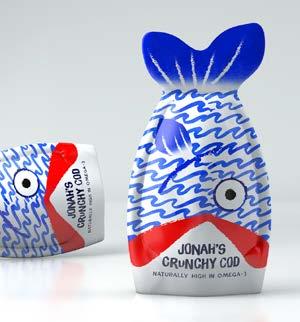
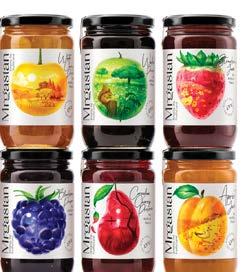

PRODUCT NAME TAKES CENTRE STAGE Minimalism has always played a role in packaging but certainly as consumers have more choices, simplicity will play a role in helping choose their preferred products. With this in mind, allowing the product name to take centre stage has allowed designers to be more playful with vivid colours and typography. There is no doubt what the names of the products


below are getting all the attention: Packaging will play a huge role for brands in 2021 and will be one of the most powerful assets they have to help connect to consumers. With the rise of digitalisation, there will be more businesses selling directly to the consumer; this means the packaging needs to deliver an experience when it arrives. Story telling will bean extremely important element to consider for packaging sold online and instore.
The brands that have a real purpose are using ecommerce in an immersive way, that understand the consumer’s mindset and the shifting model of how packaging will be presented, will be the ones that succeed in the future.
Top left: Jonah’s, SGK Anthem. Left middle: Nongfu Wangtian, ShenZhen BOB design & Happy Ghost, Pavla Chuykina. Bottom left: Yinong, Shantou Datianchao Brand Planning & Brachia KIDS, Design Bureau Izvorka Juric. Top right: Mrgastan. Bottom right: Raw Halo, B&B studio & Ritz, Bulletproof & Yo&Go, Depot branding agency.
2020 The year the worm turned
By Jane Bevis, Executive Chair, OPRL LTD
As an avid webinar viewer and sometime participant, this autumn’s discussions on whether sustainability is now mainstream have been fascinating. While Covid restrictions have tested supply chains, adding cost and complexity, they’ve also made all of us as consumers focus on what ‘sustainability’ means and our own responsibilities in consuming more responsibly. Consumerism has become a form of activism.

FMCG brands, retailers and businesses more widely are competing hard to communicate their sustainability credentials. No one seems to be stepping back from previous commitments. Some have set more ambitious goals. Of course, this isn’t a tap you can turn on at will. Those with the most impressive claims have an established pipeline of sustainability measures that they’ve continued to execute despite this year’s challenges. Packaging is no exception. Whether it’s carefully sourced virgin materials, increased recycled content, improved recyclability or switching to reusable/ refillable packs, brands wishing to retain their customer base are taking urgent action. Millennials regard this as a licence to trade.
The Ellen MacArthur Foundation recently reported that recycled content of plastic packaging increased by 22% last year, but still stands at just 6.2% by weight across 126 reporting signatories. While two thirds of their plastic packaging is reusable, recyclable or compostable, that’s grown by just 1.3% year-on-year. And while over half of participating businesses have reuse pilots planned, there’s been hardly any shift in actual use of reusable plastic packaging, at less than 2% of all plastic packaging.
ON THE BRINK OF REAL CHANGE There have been setbacks. MRF operations were affected by Coronavirus measures, although recycling collections were largely maintained in the UK. On the other hand, the switch to homeworking and home consumption has bypassed dysfunctional onthe-go recycling infrastructure.

New plastics recycling capacity is opening in the UK. Clearer guidance on what is recyclable from the UK Plastics Pact, CPI fibre-based packaging guidelines and OPRL’s 2019 Recycling Labelling Rules and PREP tool all support better design decisions. New reuse services are emerging, as are inter-brand collaborations over collections systems for packaging not handled by local authorities presently. The CMA’s investigation into green claims will keep us all honest and services like OPRL’s Certified As Recyclable provide validation.
It’s not before time. With many sustainability targets due by 2025, implementation has to accelerate. The end of the beginning is in sight.







